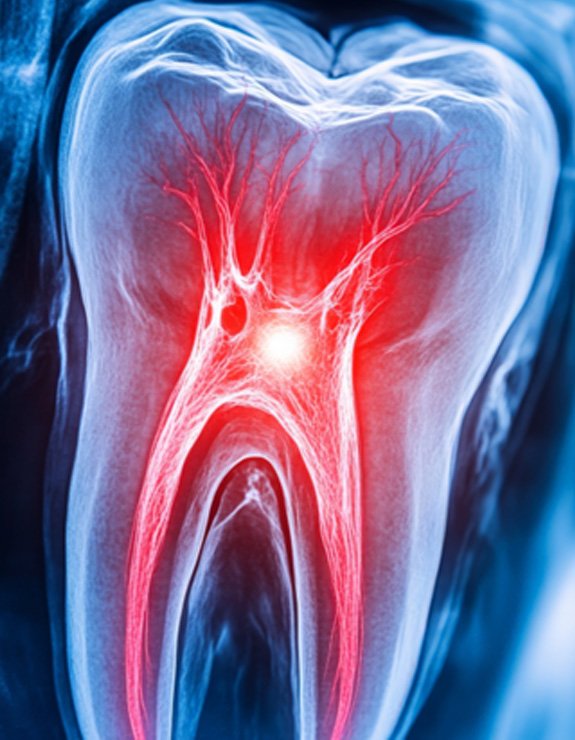Pulp Treatment – Arlington Heights, IL
Preserve Your Child’s Smile

A toothache can be one of the most annoying types of pain. For young children, such a situation can be downright debilitating. Here at Costello & DeHart Dental Excellence, we have great empathy for young ones who are struggling with oral pain, and we want to help them find relief! That is why we offer pulp treatment, also known as pulp therapy, as one of our restorative services for kids. Continue reading below to learn more about this procedure.
What Is Dental Pulp?

Teeth have multiple layers: the enamel (on the outside), the dentin (in the middle), and the pulp (the innermost layer). Dental pulp is a soft substance that is composed of nerves, blood vessels, and connective tissues.
When the pulp becomes damaged, infected, or inflamed, it can cause a major toothache and threaten the tooth’s viability. If that ever happens to one of your child’s teeth, our team may determine that they need pulp treatment.
There are two types of pulp treatment:
- During a pulpotomy, we focus on removing decayed or damaged pulp from a tooth’s crown.
- A pulpectomy is more extensive. It involves removing all of the pulp from both the root and crown of a baby tooth. (This should not be confused with root canal therapy, which is typically performed on permanent teeth.)
Does My Child Need Pulp Treatment?

The only way to find out for sure if your child needs pulp treatment is to bring them in for a consultation. We will learn about their symptoms, perform a visual examination, and perhaps use our advanced CBCT scanner in order to understand what is happening inside the tooth. After the exam, we will be able to recommend a treatment plan.
Here are some signs that your child’s pulp may need to be evaluated:
- They are experiencing a toothache.
- There is visible damage to a tooth.
- There is redness and swelling around a tooth.
- A tooth is extremely sensitive to hot and cold foods and beverages.
- A tooth has started to loosen.
How Does Pulp Treatment Work?

Admittedly, the prospect of pulp treatment for your child might seem a bit intimidating, but you can be confident that we will strive to make them comfortable throughout their procedure. We offer multiple types of sedation to help patients remain calm and relaxed during even the most complex treatments.
Once your child is settled in, we will get to work on their tooth. We will carefully remove damaged tissue while striving to leave healthy tissue untouched. Then, we will fill in the tooth with a special inert material. Then, we will need to place a temporary crown to strengthen and protect the treated tooth. Later, the temporary crown may need to be replaced by a permanent restoration.
Your child’s mouth might be sore for a few days to a week after their procedure. Once they finish recovering, they should once again be able to enjoy pain-free dental function.
I Need a Checkup & Cleaning I Need a Dentist for My Child I Need a Dentist for My Entire Family I'm Worried About Gum Disease I Have a Cavity or Broken Tooth I am Missing One or More Teeth I Want to Enhance My Smile I Want to Straighten My Teeth I Have a Dental Emergency I Have Jaw Pain/Headaches View Our Services
